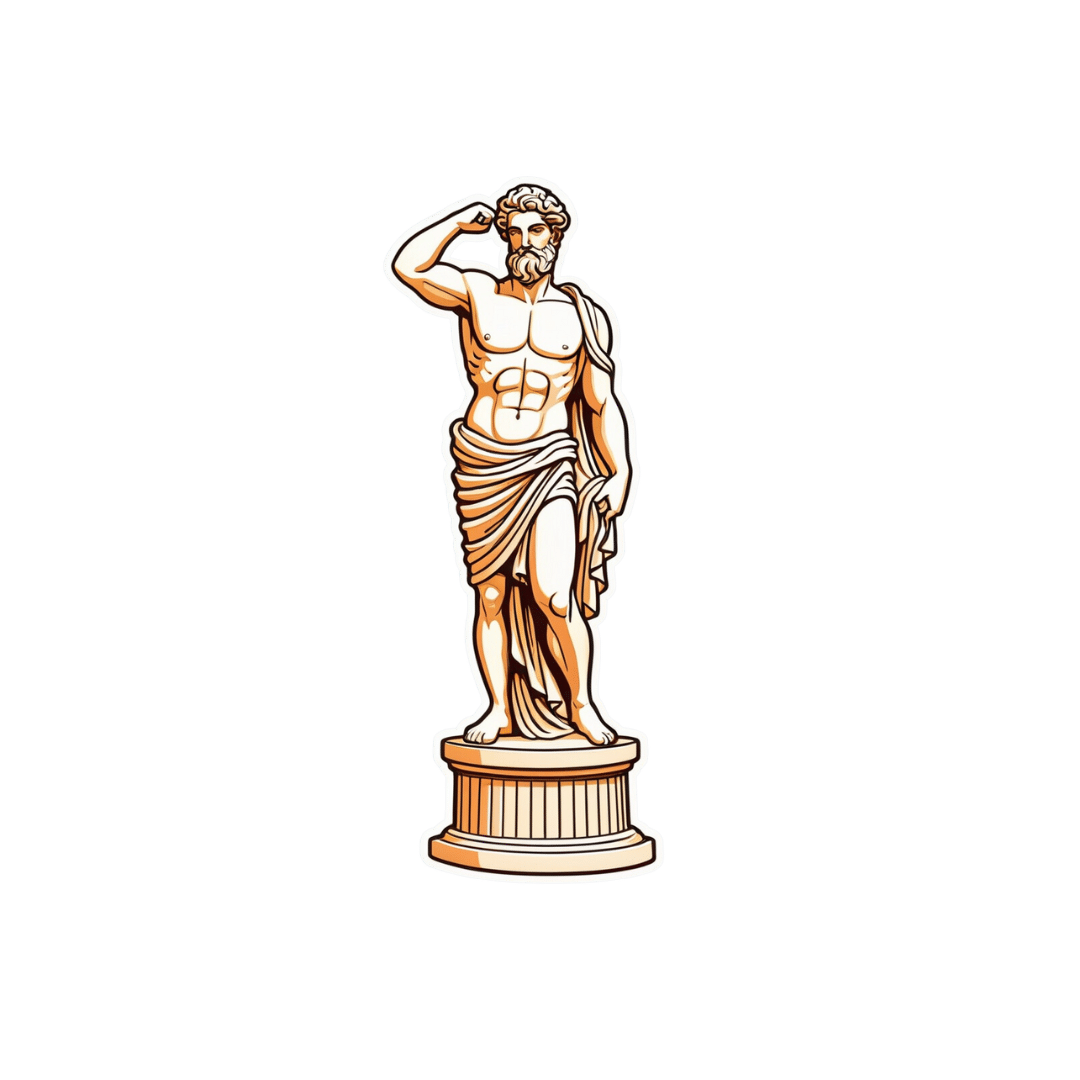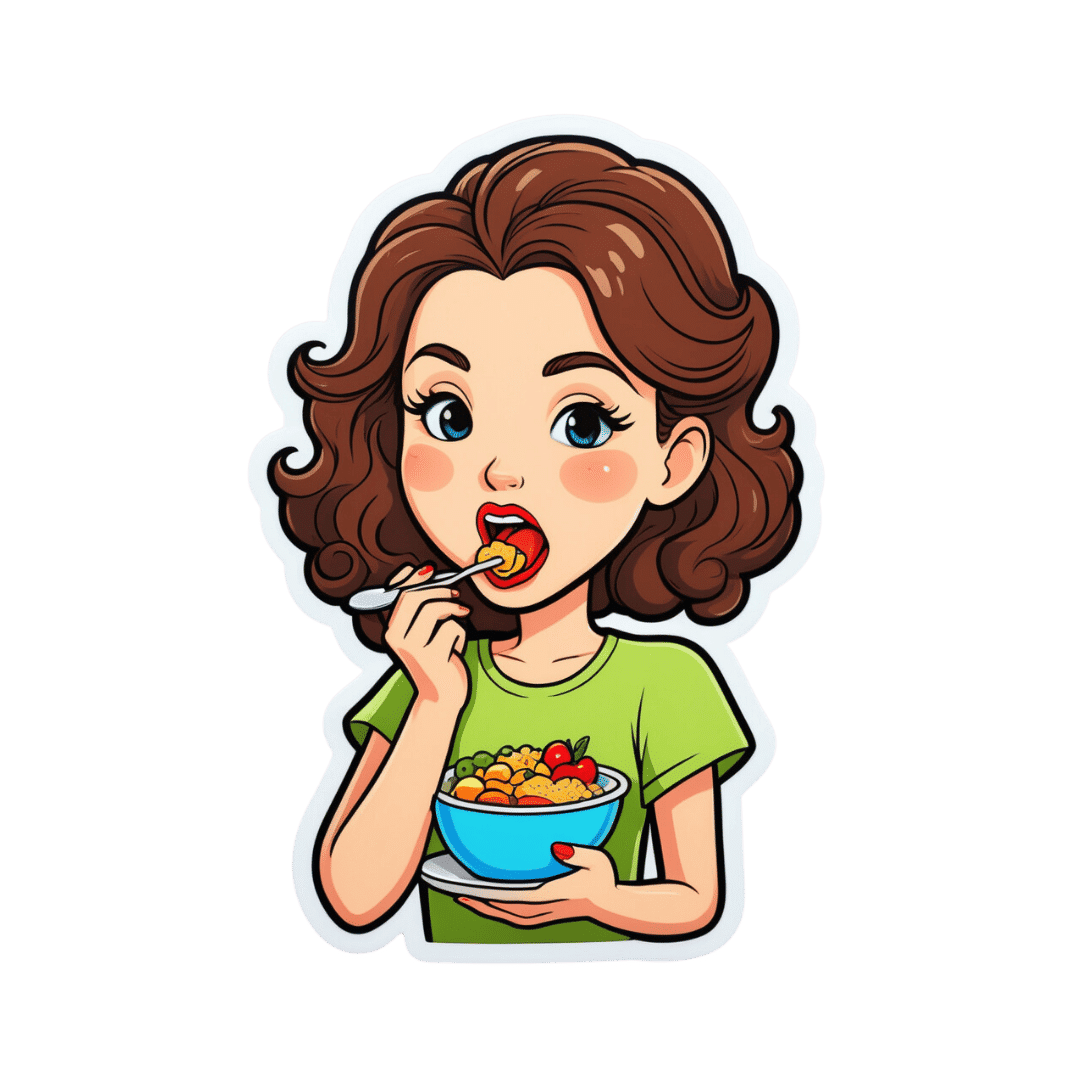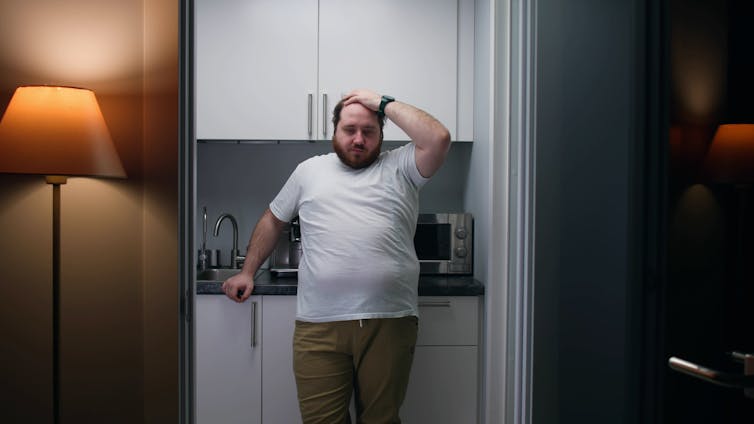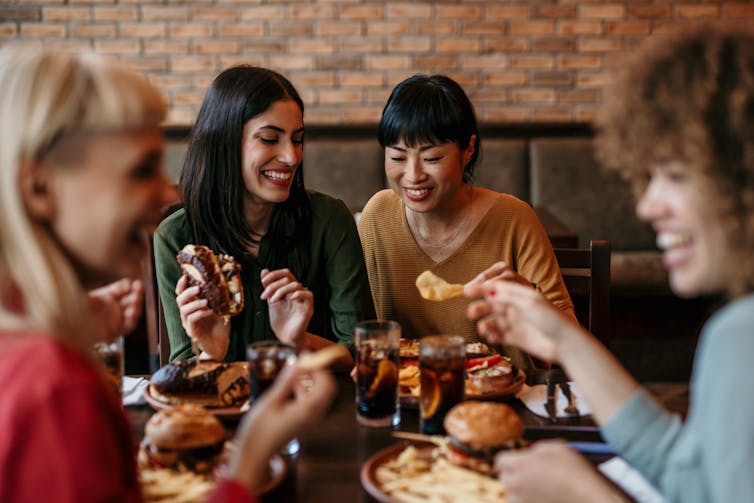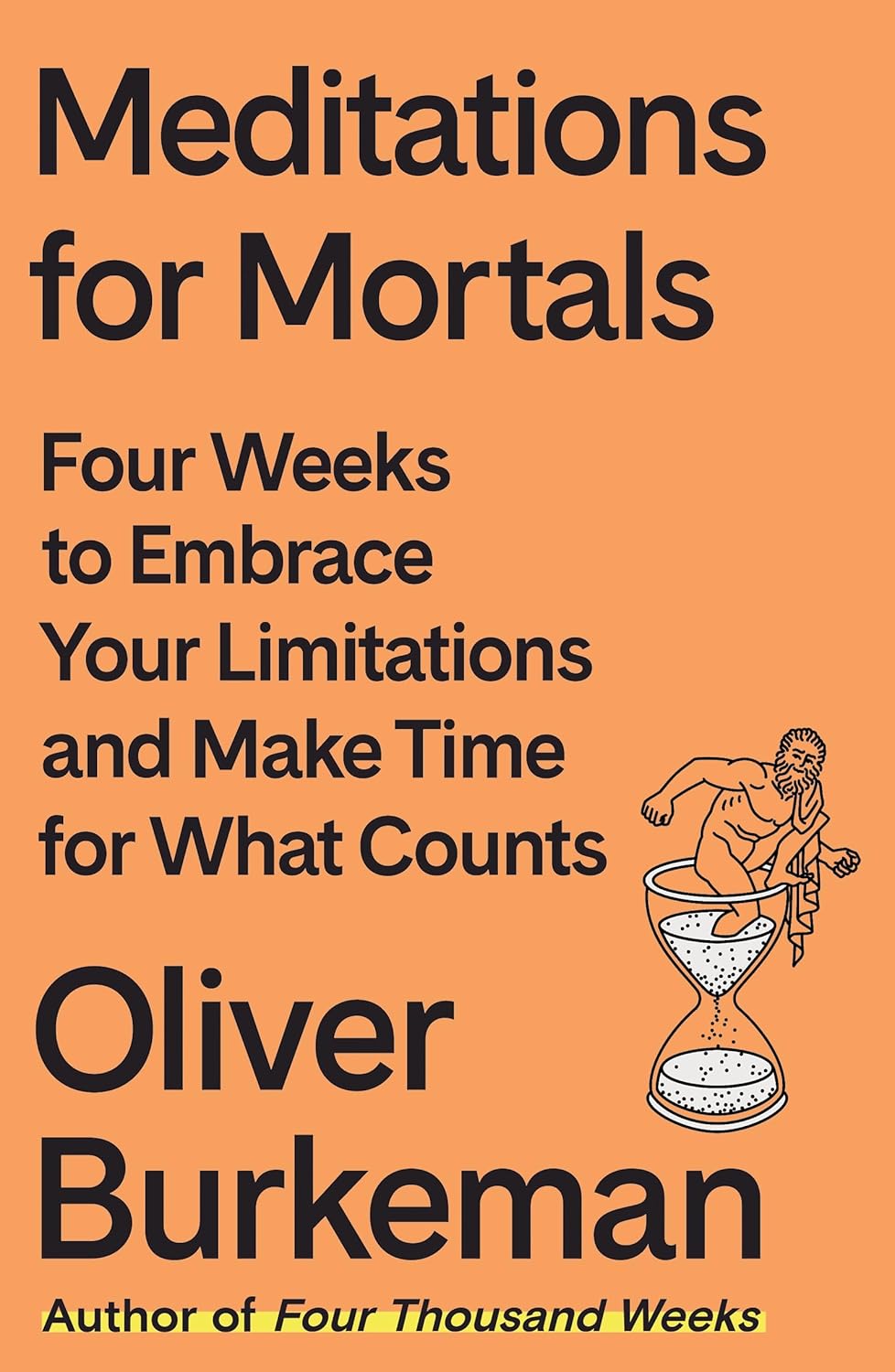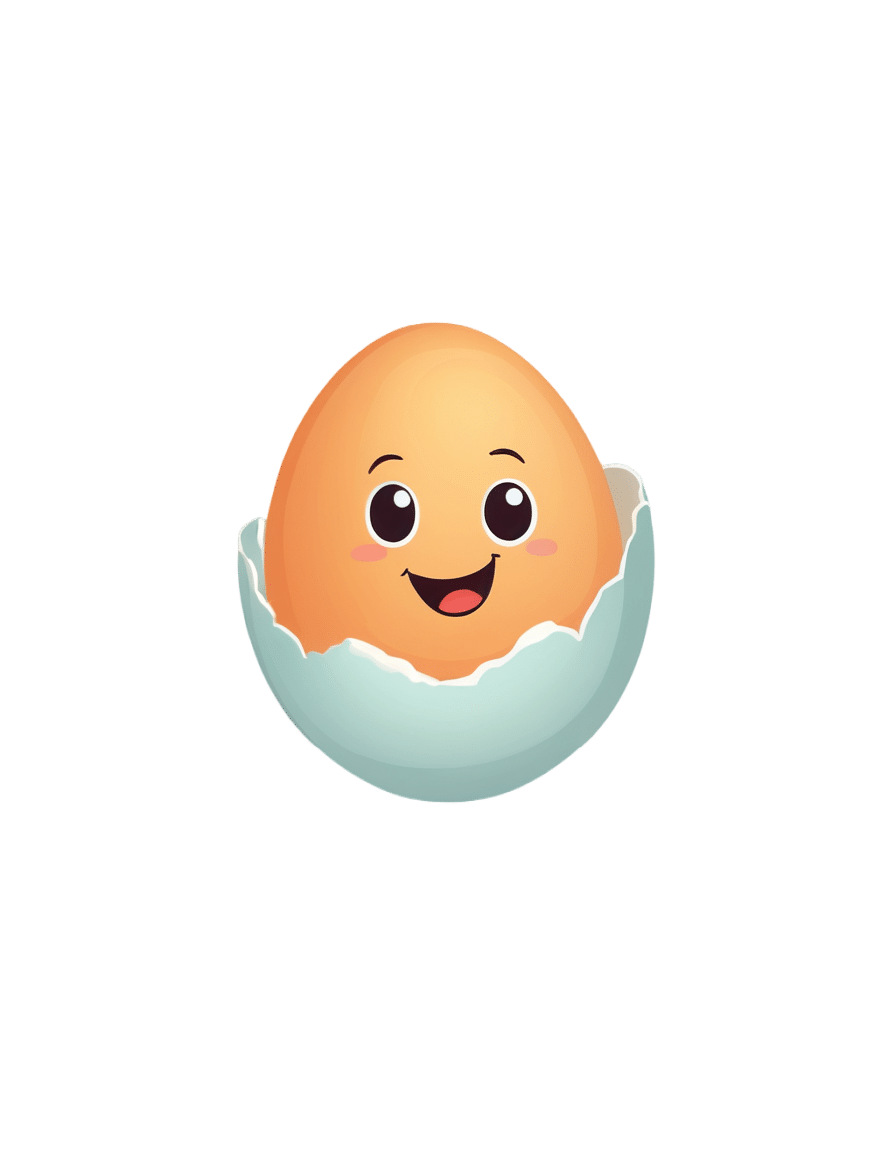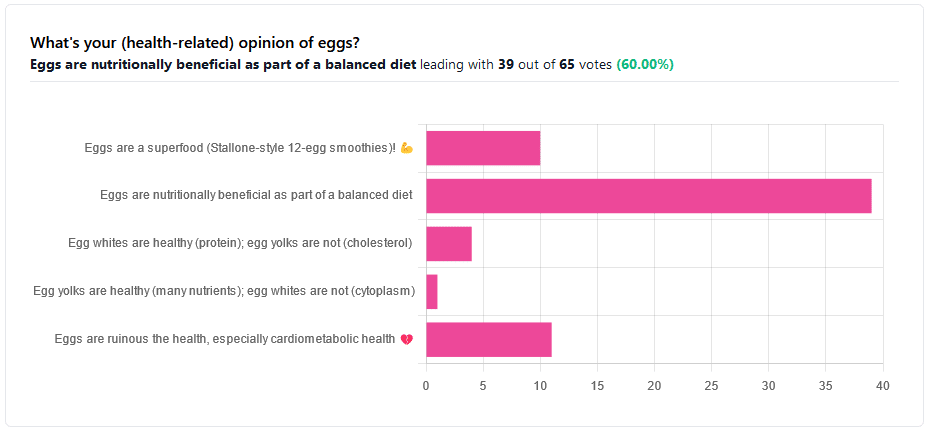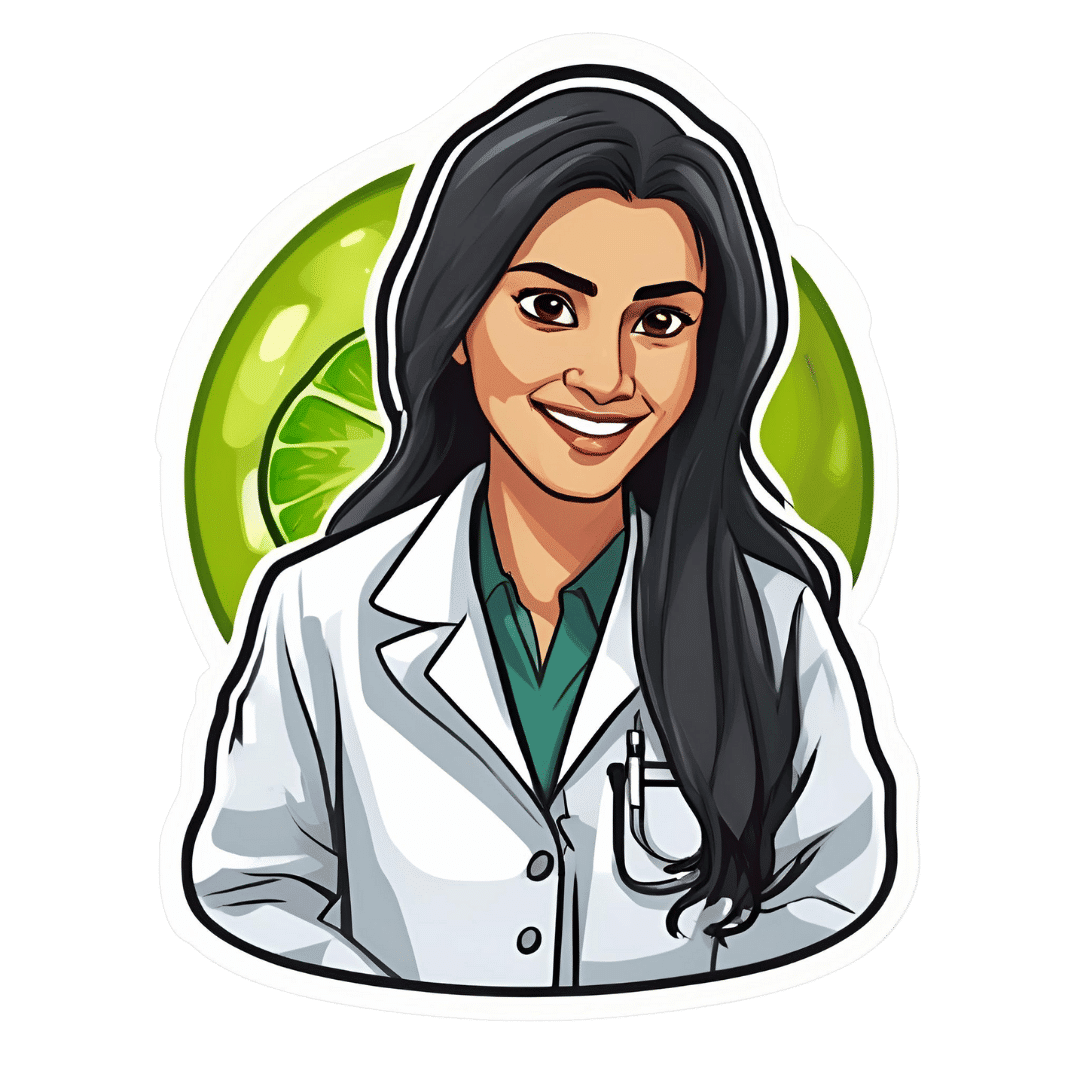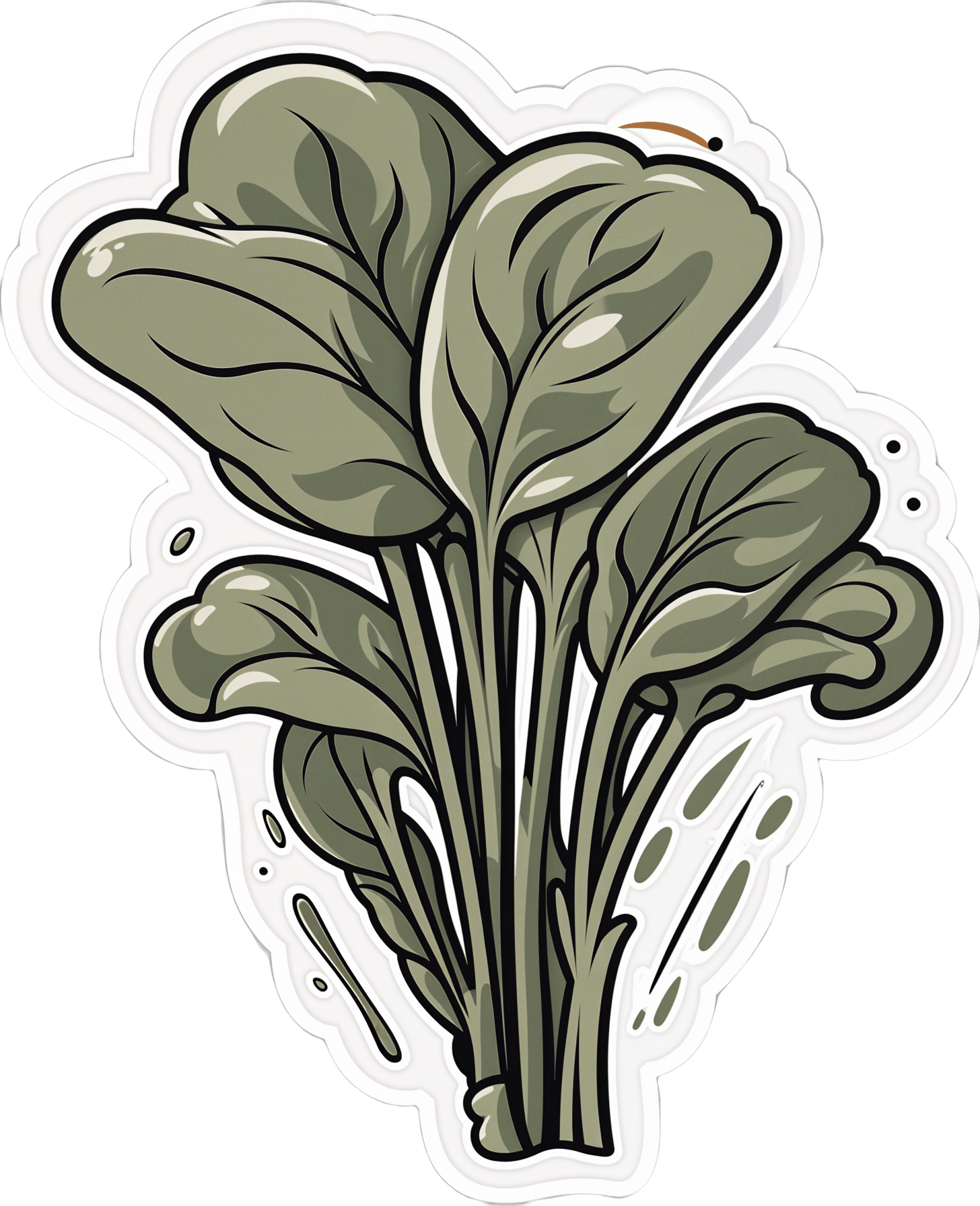
Understanding Spinach Oxalates and Health
10almonds is reader-supported. We may, at no cost to you, receive a portion of sales if you purchase a product through a link in this article.
It’s Q&A Day at 10almonds!
Have a question or a request? You can always hit “reply” to any of our emails, or use the feedback widget at the bottom!
In cases where we’ve already covered something, we might link to what we wrote before, but will always be happy to revisit any of our topics again in the future too—there’s always more to say!
As ever: if the question/request can be answered briefly, we’ll do it here in our Q&A Thursday edition. If not, we’ll make a main feature of it shortly afterwards!
So, no question/request too big or small
❝Interesting, but… Did you know spinach is high in oxylates? Some people are sensitive and can cause increased inflammation, joint pain or even kidney stones. Moderation is key. My sister and I like to eat healthy but found out by experience that too much spinach salad caused us joint and other aches.❞
It’s certainly good to be mindful of such things! For most people, a daily serving of spinach shouldn’t cause ill effects, and certainly there are other greens to eat.
We wondered whether there was a way to reduce the oxalate content, and we found:
How to Reduce Oxalic Acid in Spinach: Neutralizing Oxalates
…which led us this product on Amazon:
Nephure Oxalate Reducing Enzyme, Low Oxalate Diet Support
We wondered what “nephure” was, and whether it could be trusted, and came across this “Supplement Police” article about it:
Nephure Review – Oxalate Reducing Enzyme Powder Health Benefits?
…which honestly, seems to have been written as a paid advertisement. But! It did reference a study, which we were able to look up, and find:
In vitro and in vivo safety evaluation of Nephure™
…which seems to indicate that it was safe (for rats) in all the ways that they checked. They did not, however, check whether it actually reduced oxalate content in spinach or any other food.
The authors did declare a conflict of interest, in that they had a financial relationship with the sponsor of the study, Captozyme Inc.
All in all, it may be better to just have kale instead of spinach:
Don’t Forget…
Did you arrive here from our newsletter? Don’t forget to return to the email to continue learning!
Recommended
Learn to Age Gracefully
Join the 98k+ American women taking control of their health & aging with our 100% free (and fun!) daily emails:

4 things ancient Greeks and Romans got right about mental health
10almonds is reader-supported. We may, at no cost to you, receive a portion of sales if you purchase a product through a link in this article.
According to the World Health Organization, about 280 million people worldwide have depression and about one billion have a mental health problem of any kind.
People living in the ancient world also had mental health problems. So, how did they deal with them?
As we’ll see, some of their insights about mental health are still relevant today, even though we might question some of their methods.

Jr Morty/Shutterstock 1. Our mental state is important
Mental health problems such as depression were familiar to people in the ancient world. Homer, the poet famous for the Iliad and Odyssey who lived around the eighth century BC, apparently died after wasting away from depression.
Already in the late fifth century BC, ancient Greek doctors recognised that our health partly depends on the state of our thoughts.
In the Epidemics, a medical text written in around 400BC, an anonymous doctor wrote that our habits about our thinking (as well as our lifestyle, clothing and housing, physical activity and sex) are the main determinants of our health.

Homer, the ancient Greek poet, had depression. Thirasia/Shutterstock 2. Mental health problems can make us ill
Also writing in the Epidemics, an anonymous doctor described one of his patients, Parmeniscus, whose mental state became so bad he grew delirious, and eventually could not speak. He stayed in bed for 14 days before he was cured. We’re not told how.
Later, the famous doctor Galen of Pergamum (129-216AD) observed that people often become sick because of a bad mental state:
It may be that under certain circumstances ‘thinking’ is one of the causes that bring about health or disease because people who get angry about everything and become confused, distressed and frightened for the slightest reason often fall ill for this reason and have a hard time getting over these illnesses.
Galen also described some of his patients who suffered with their mental health, including some who became seriously ill and died. One man had lost money:
He developed a fever that stayed with him for a long time. In his sleep he scolded himself for his loss, regretted it and was agitated until he woke up. While he was awake he continued to waste away from grief. He then became delirious and developed brain fever. He finally fell into a delirium that was obvious from what he said, and he remained in this state until he died.
3. Mental illness can be prevented and treated
In the ancient world, people had many different ways to prevent or treat mental illness.
The philosopher Aristippus, who lived in the fifth century BC, used to advise people to focus on the present to avoid mental disturbance:
concentrate one’s mind on the day, and indeed on that part of the day in which one is acting or thinking. Only the present belongs to us, not the past nor what is anticipated. The former has ceased to exist, and it is uncertain if the latter will exist.
The philosopher Clinias, who lived in the fourth century BC, said that whenever he realised he was becoming angry, he would go and play music on his lyre to calm himself.
Doctors had their own approaches to dealing with mental health problems. Many recommended patients change their lifestyles to adjust their mental states. They advised people to take up a new regime of exercise, adopt a different diet, go travelling by sea, listen to the lectures of philosophers, play games (such as draughts/checkers), and do mental exercises equivalent to the modern crossword or sudoku.

Galen, a famous doctor, believed mental problems were caused by some idea that had taken hold of the mind. Pierre Roche Vigneron/Wikimedia For instance, the physician Caelius Aurelianus (fifth century AD) thought patients suffering from insanity could benefit from a varied diet including fruit and mild wine.
Doctors also advised people to take plant-based medications. For example, the herb hellebore was given to people suffering from paranoia. However, ancient doctors recognised that hellebore could be dangerous as it sometimes induced toxic spasms, killing patients.
Other doctors, such as Galen, had a slightly different view. He believed mental problems were caused by some idea that had taken hold of the mind. He believed mental problems could be cured if this idea was removed from the mind and wrote:
a person whose illness is caused by thinking is only cured by taking care of the false idea that has taken over his mind, not by foods, drinks, [clothing, housing], baths, walking and other such (measures).
Galen thought it was best to deflect his patients’ thoughts away from these false ideas by putting new ideas and emotions in their minds:
I put fear of losing money, political intrigue, drinking poison or other such things in the hearts of others to deflect their thoughts to these things […] In others one should arouse indignation about an injustice, love of rivalry, and the desire to beat others depending on each person’s interest.
4. Addressing mental health needs effort
Generally speaking, the ancients believed keeping our mental state healthy required effort. If we were anxious or angry or despondent, then we needed to do something that brought us the opposite of those emotions.

Watch some comedy, said physician Caelius Aurelianus. VCU Tompkins-McCaw Library/Flickr, CC BY-NC-SA This can be achieved, they thought, by doing some activity that directly countered the emotions we are experiencing.
For example, Caelius Aurelianus said people suffering from depression should do activities that caused them to laugh and be happy, such as going to see a comedy at the theatre.
However, the ancients did not believe any single activity was enough to make our mental state become healthy. The important thing was to make a wholesale change to one’s way of living and thinking.
When it comes to experiencing mental health problems, we clearly have a lot in common with our ancient ancestors. Much of what they said seems as relevant now as it did 2,000 years ago, even if we use different methods and medicines today.
If this article has raised issues for you, or if you’re concerned about someone you know, call Lifeline on 13 11 14.
Konstantine Panegyres, McKenzie Postdoctoral Fellow, researching Greco-Roman antiquity, The University of Melbourne
This article is republished from The Conversation under a Creative Commons license. Read the original article.
Share This Post

How can I stop using food to cope with negative emotions?
10almonds is reader-supported. We may, at no cost to you, receive a portion of sales if you purchase a product through a link in this article.
Have you ever noticed changes in your eating habits when you are sad, bored or anxious?
Many people report eating either more, or less, as a way of helping them to cope when they experience difficult emotions.
Although this is a very normal response, it can take the pleasure out of eating, and can become distressing and bring about other feelings of shame and self-criticism.
Adding to the complexity of it all, we live in a world where diet culture is unavoidable, and our relationship to eating, food and body image can become complicated and confusing.

Drazen Zigic/Shutterstock Emotional eating is common
“Emotional eating” refers to the eating behaviours (typically eating more) that occur in response to difficult emotions.
Research shows around 20% of people regularly engage in emotional eating, with a higher prevalence among adolescents and women. In a study of more than 1,500 adolescents, 34% engaged in emotional eating while sad and 40% did so while anxious.
Foods consumed are often fast-foods and other energy-dense, nutrient-poor convenience foods.
Stress, strong emotions and depression
For some people, emotional eating was simply a habit formed earlier in life that has persisted over time.
But other factors might also contribute to the likelihood of emotional eating. The physiological effects of stress and strong emotions, for example, can influence hormones such as cortisol, insulin and glucose, which can also increase appetite.
Increased impulsivity (behaving before thinking things through), vulnerability to depression, a tendency to ruminate and difficulties regulating emotions also increase the likelihood of emotional eating.

Depression increases the likelihood of emotional eating. TommyStockProject/Shutterstock So what do you do?
First, know that fluctuations in eating are normal. However, if you find that the way you eat in response to difficult emotions is not working for you, there are a few things you can do.
Starting with small things that are achievable but can have a huge impact, such as prioritising getting enough sleep and eating regularly.
Then, you can start to think about how you handle your emotions and hunger cues.
Expand your emotional awareness
Often we label emotions as good or bad, and this can result in fear, avoidance, and unhelpful coping strategies such as emotional eating.
But it’s also important to differentiate the exact emotion. This might be feeling isolated, powerless or victimised, rather than something as broad as sad.
By noticing what the emotion is, we can bring curiosity to what it means, how we feel in our minds and bodies, and how we think and behave in response.
Tap into your feelings of hunger and fullness
Developing an intuitive way of eating is another helpful strategy to promote healthy eating behaviours.
Intuitive eating means recognising, understanding and responding to internal signals of hunger and fullness. This might mean tuning in to and acknowledging physical hunger cues, responding by eating food that is nourishing and enjoyable, and identifying sensations of fullness.
Intuitive eating encourages flexibility and thinking about the pleasure we get from food and eating. This style of eating also allows us to enjoy eating out with friends, and sample local delicacies when travelling.
It can also reduce the psychological distress from feeling out of control with your eating habits and the associated negative body image.

Try to be flexible in thinking about the pleasure of food and eating with friends. La Famiglia/Shutterstock When is it time to seek help?
For some people, the thoughts and behaviours relating to food, eating and body image can negatively impact their life.
Having the support of friends and family, accessing online resources and, in some instances, seeing a trained professional, can be very helpful.
There are many therapeutic interventions that work to improve aspects associated with emotional eating. These will depend on your situation, needs, stage of life and other factors, such as whether you are neurodivergent.
The best approach is to engage with someone who can bring compassion and understanding to your personal situation, and work with you collaboratively. This work might include:
- unpacking some of the patterns that could be underlying these emotions, thoughts and behaviours
- helping you to discover your emotions
- supporting you to process other experiences, such as trauma exposure
- developing a more flexible and intuitive way of eating.
One of the dangers that can occur in response to emotional eating is the temptation to diet, which can lead to disordered eating, and eating disorder behaviours. Indicators of a potential eating disorder can include:
- recent rapid weight loss
- preoccupation with weight and shape (which is usually in contrast to other people’s perceptions)
- eating large amounts of food within a short space of time (two hours or less) and feeling a sense of loss of control
- eating in secret
- compensating for food eaten (with vomiting, exercise or laxatives).
Evidence-based approaches can support people experiencing eating disorders. To find a health professional who is informed and specialises in this area, search the Butterfly Foundation’s expert database.
If this article has raised issues for you, or if you’re concerned about someone you know, call Lifeline on 13 11 14, or the Butterfly Foundation on 1800 ED HOPE (1800 33 4673).
Inge Gnatt, PhD Candidate, Lecturer in Psychology, Swinburne University of Technology
This article is republished from The Conversation under a Creative Commons license. Read the original article.
Share This Post

Meditations for Mortals – by Oliver Burkeman
10almonds is reader-supported. We may, at no cost to you, receive a portion of sales if you purchase a product through a link in this article.
We previously reviewed this author’s “Four Thousand Weeks”, but for those who might have used a lot of those four thousand weeks already, and would like to consider things within a smaller timeframe for now, this work is a 28-day daily reader.
Now, daily readers are usually 366 days, but the chapters here are not the single page chapters that 366-page daily readers usually have. So, expect to invest a little more time per day (say, about 6 pages for each daily chapter).
Burkeman does not start the way we might expect, by telling us to take the time to smell the roses. Instead, he starts by examining the mistakes that most of us make most of the time, often due to unexamined assumptions about the world and how it works. Simply put, we’ve often received bad lessons in life (usually not explicitly, but rather, from our environments), and it takes some unpacking first to deal with that.
Nor is the book systems-based, as many books that get filed under “time management” may be, but rather, is simply principles-based. This is a strength, because principles are a lot easier to keep to than systems.
The writing style is direct and conversational, and neither overly familiar nor overly academic. It strikes a very comfortably readable balance.
Bottom line: if you’d like to get the most out of your days, this book can definitely help improve things a lot.
Click here to check out Meditations For Mortals, and live fulfilling days!
Share This Post
Related Posts

The Easiest Way To Take Up Journaling
10almonds is reader-supported. We may, at no cost to you, receive a portion of sales if you purchase a product through a link in this article.
Dear Diary…
It’s well-established that journaling is generally good for mental health. It’s not a magical panacea, as evidenced by The Diaries of Franz Kafka for example (that man was not in good mental health). But for most of us, putting our thoughts and feelings down on paper (or the digital equivalent) is a good step for tidying our mind.
And as it can be said: mental health is also just health.
But…
What to write about?
It’s about self-expression (even if only you will read it), and…
❝Writing about traumatic, stressful or emotional events has been found to result in improvements in both physical and psychological health, in non-clinical and clinical populations.
In the expressive writing paradigm, participants are asked to write about such events for 15–20 minutes on 3–5 occasions.
Those who do so generally have significantly better physical and psychological outcomes compared with those who write about neutral topics.❞
Source: Emotional and physical health benefits of expressive writing
In other words, write about whatever moves you.
Working from prompts
If you read the advice above and thought “but I don’t know what moves me”, then fear not. It’s perfectly respectable to work from prompts, such as:
- What last made you cry?
- What last made you laugh?
- What was a recent meaningful moment with family?
- What is a serious mistake that you made and learned from?
- If you could be remembered for just one thing, what would you want it to be?
In fact, sometimes working from prompts has extra benefits, precisely because it challenges us to examine things we might not otherwise think about.
If a prompt asks “What tends to bring you most joy recently?” and the question stumps you, then a) you now are prompted to look at what you can change to find more joy b) you probably wouldn’t have thought of this question—most depressed people don’t, and if you cannot remember recent joy, then well, we’re not here to diagnose, but let’s just say that’s a symptom.
A quick aside: if you or a loved oneare prone to depressive episodes, here’s a good resource, by the way:
The Mental Health First-Aid That You’ll Hopefully Never Need
And in the event of the mental health worst case scenario:
The six prompts we gave earlier are just ideas that came to this writer’s mind, but they’re (ok, some bias here) very good ones. If you’d like more though, here’s a good resource:
550+ Journal Prompts: The Ultimate List
The Good, The Bad, and The Ugly
While it’s not good to get stuck in ruminative negative thought spirals, it is good to have a safe outlet to express one’s negative thoughts/feelings:
Remember, your journal is (or ideally, should be) a place without censure. If you fear social consequences should your journal be read, then using an app with a good security policy and encryption options can be a good idea for journaling
Finch App is a good free option if it’s not too cutesy for your taste, because in terms of security:
- It can’t leak your data because your data never leaves your phone (unless you manually back up your data and then you choose to put it somewhere unsafe)
- It has an option to require passcode/biometrics etc to open the app
As a bonus, it also has very many optional journaling prompts, and also (optional) behavioral activation prompts, amongst more other offerings that we don’t have room to list here.
Take care!
Don’t Forget…
Did you arrive here from our newsletter? Don’t forget to return to the email to continue learning!
Learn to Age Gracefully
Join the 98k+ American women taking control of their health & aging with our 100% free (and fun!) daily emails:

Eggs: Nutritional Powerhouse or Heart-Health Timebomb?
10almonds is reader-supported. We may, at no cost to you, receive a portion of sales if you purchase a product through a link in this article.
Eggs: All Things In Moderation?

We asked you for your (health-related) opinion on eggs. We specified that, for the sake of simplicity, let’s say that they are from happy healthy backyard hens who enjoy a good diet.
Apparently this one wasn’t as controversial as it might have been! We (for myth-busting purposes) try to pick something polarizing and sometimes even contentious for our Friday editions, and pick apart what science lies underneath public perceptions.
However, more than half (in fact, 60%) of the subscribers who voted in the poll voted for “Eggs are nutritionally beneficial as part of a balanced diet”, which very moderate statement is indeed pretty much the global scientific consensus.
Still, we’ve a main feature to write, so let’s look at the science, and what the other 40% had in mind:
Eggs are ruinous to health, especially cardiometabolic health: True or False?
False, per best current science, anyway!
Scientific consensus has changed over the years. We learned about cholesterol, then we learned about different types of cholesterol, and now we’ve even learned about in some instances even elevated levels of “bad” cholesterol aren’t necessarily a cause of cardiometabolic disorders so much as a symptom—especially in women.
Not to derail this main feature about eggs (rather than just cholesterol), but for those who missed it, this is actually really interesting: basically, research (pertaining to the use of statins) has found that in women, higher LDL levels aren’t anywhere near the same kind of risk factor as they are for men, and thus may mean that statins (whose main job is reducing LDL) may be much less helpful for women than for men, and more likely to cause unwanted serious side effects in women.
Check out our previous main feature about this: Statins: His & Hers?
But, for back on topic, several large studies (totalling 177,000 people in long-term studies in 50 countries) found:
❝Results from the three cohorts and from the updated meta-analysis show that moderate egg consumption (up to one egg per day) is not associated with cardiovascular disease risk overall, and is associated with potentially lower cardiovascular disease risk in Asian populations.❞
Egg whites are healthy (protein); egg yolks are not (cholesterol): True or False?
True and False, respectively. That is to say, egg whites are healthy (protein), and egg yolks are also healthy (many nutrients).
We talked a bit already about cholesterol, so we’ll not rehash that here. As to the rest:
Eggs are one of the most nutritionally dense foods around. After all, they have everything required to allow a cluster of cells to become a whole baby chick. That’s a lot of body-building!
They’re even more nutritionally heavy-hitters if you get omega-3 enriched eggs, which means the hens were fed extra omega-3, usually in the form of flax seeds.
Also, free-range is better healthwise than others. Do bear in mind that unless they really are from your backyard, or a neighbor’s, chances are that the reality is not what the advertising depicts, though. There are industry minimum standards to be able to advertise as “free-range”, and those standards are a) quite low b) often ignored, because an occasional fine is cheaper than maintaining good conditions.
So if you can look after your own hens, or get them from somewhere that you can see for yourself how they are looked after, so much the better!
Check out the differences side-by-side, though:
Pastured vs Omega-3 vs “Conventional” Eggs: What’s the Difference?
Stallone-style 12-egg smoothies are healthy: True or False?
False, at least if taken with any regularity. One can indeed have too much of a good thing.
So, what’s the “right amount” to eat?
It may vary depending on individual factors (including age and ethnicity), but a good average, according to science, is to keep it to 3 eggs or fewer per day. There are a lot of studies, but we only have so much room here, so we’ll pick one. Its findings are representative of (and in keeping with) the many other studies we looked at, so this seems uncontroversial scientifically:
❝Intake of 1 egg/d was sufficient to increase HDL function and large-LDL particle concentration; however, intake of 2-3 eggs/d supported greater improvements in HDL function as well as increased plasma carotenoids. Overall, intake of ≤3 eggs/d favored a less atherogenic LDL particle profile, improved HDL function, and increased plasma antioxidants in young, healthy adults.❞
Enjoy!
Don’t Forget…
Did you arrive here from our newsletter? Don’t forget to return to the email to continue learning!
Learn to Age Gracefully
Join the 98k+ American women taking control of their health & aging with our 100% free (and fun!) daily emails:

Why You’re Tired & How To Fix It
10almonds is reader-supported. We may, at no cost to you, receive a portion of sales if you purchase a product through a link in this article.

This is Sadia Badiei. A dietician by academic and professional background, she’s nowadays hung up her lab coat for a chef’s jacket, and is best known for her “Pick Up Limes” brand. Today, we’ll be taking her advice on managing energy levels with what’s on our plates!
Quick note: our usual medical/legal disclaimer applies, and this article cannot diagnose you from afar, and thus neither can it make any certain prescription; this is for educational purposes, and aimed at being applicable to most of our readers.
There are many possible things that can cause chronic fatigue, and not all of them can be fixed by diet. Your doctor will have access to tests and such that we, being a humble health science publication, do not.
You may recognize her; we’ve featured her videos occasionally, mostly recently:
Pick Up A Zest For Life: 10 Lessons For A Healthy Mind & Body
But, what does she want us to know about living life with more energy?
It starts with balance
Badiei makes the case that we should strive for a nutritionally-balanced diet; that may not come as much of a revelation, but what does that look like for a vegan (Badiei advocates for plant-based eating)?
She recommends that our diet consist of:
- About 50% fruits and vegetables
- About 25% grains and starches
- About 25% proteins
- Modest amounts of fats
- A little of well-chosen dairy substitutions
- Finally, a few judicious supplements to top it off
That does add up to more than 100%, but 1) we did say “About n%” and 2) this is not a bad thing to note, actually, since Badiei advocates (as we do) for focussing more on what we add into our diet, rather than what we take out.
Breaking it down a little further, she recommends making sure to get “the foundational seven”, which is a little like “Dr. Greger’s Daily Dozen”, but in this case it’s counted on a per-food-type basis.
Thus, she recommends:
- Dark green leafy vegetables
- Assorted other non-starchy vegetables (your choice what kind)
- Fruit, of any kinds (unlike Dr. Greger separating berries)
- Grains and starches (so for example, potatoes are lumped in with rice here, botanically very different, but often fulfil a similar culinary role)
- Nuts and seeds
- Legumes
- Fortified dairy alternatives
For full details including how much of each, and “what counts”, etc, see:
Pick Up Limes | The Nourish Method
Time your carbs
Slow-release carbohydrates, those with the most fiber, are best most of the time, giving us more sustained fuel, keeping us energized for longer after meals—even if we would rather sleep:
She cites: Fiber and Saturated Fat Are Associated with Sleep Arousals and Slow Wave Sleep
Quick-release carbohydrates, those with what’s generally considered a less favorable carb:fiber ratio, are best if we’re going to eat nearer to bedtime. We know, eating before bed is often considered a bit of a no-no, but Badiei bids us indulge if we so desire, as the quicker-absorbed carbohydrates support tryptophan reaching our brain more efficiently, and thus promote sleep onset.
See also: Should You Go Light Or Heavy On Carbs?
About that fat
We mentioned (or rather, Badiei’s citation mentioned) saturated fat. It is indeed linked with difficulty falling asleep, and/but omega-3 fatty acids, on the other hand, promote better sleep.
She cites: The relationship between sleep duration, sleep quality and dietary intake in adults
While you’re enjoying those nuts and seeds (for the omega-3 fatty acids), you might also note that several also star in Badiei’s list of plant-based foods that are rich in tryptophan, such as soy, cashews, pumpkin seeds, sunflower seeds, beans, green vegetables, and mushrooms.
Micronutrients
Badiei’s focus here is on B-vitamins, iron, magnesium, selenium, and zinc. We imagine most of our readers here are taking steps to ensure to get a full daily coverage of vitamins and minerals anyway, but you might want to read what she has to say about iron on a plant-based diet, because the numbers may be different than you think.
The reason for this is that while animal products contain mostly heme iron, which is easier to absorb but associated with a risk increase in some diseases, plant-based foods usually* contain only non-heme iron, which is healthier but not as bioavailable, so if eating only plants, we need more of it:
Pick Up Limes | Iron on a Plant-Based Diet
*If you eat a carnivorous plant, guess what, it’ll have heme iron in it, tangling that food web.
“What if I know I have chronic fatigue for non-dietary reasons?”
Well, that sucks, and we’re not going to pretend the above will magically fix it. However, there are still things that can at least relatively improve your experience:
Eat To Beat Chronic Fatigue! Yes, Even When Fatigued Chronically
(it’s a good guide to being able to consistently eat healthily when your energy levels are consistently at minimal, meaning that a lot of common advice becomes unusable)
Take care!
Don’t Forget…
Did you arrive here from our newsletter? Don’t forget to return to the email to continue learning!
Learn to Age Gracefully
Join the 98k+ American women taking control of their health & aging with our 100% free (and fun!) daily emails:


